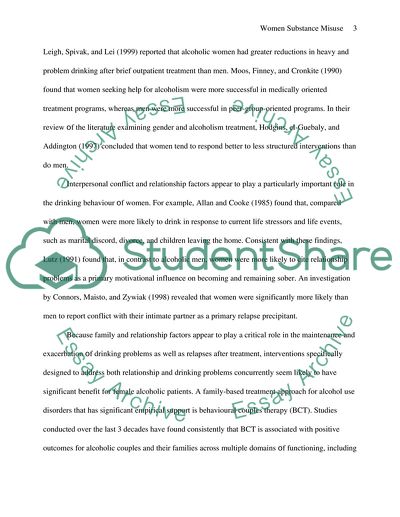Cite this document
(“Women Substance Misuse and Mental Health Essay Example | Topics and Well Written Essays - 4500 words - 1”, n.d.)
Women Substance Misuse and Mental Health Essay Example | Topics and Well Written Essays - 4500 words - 1. Retrieved from https://studentshare.org/health-sciences-medicine/1713652-women-substance-misuse-and-mental-health
Women Substance Misuse and Mental Health Essay Example | Topics and Well Written Essays - 4500 words - 1. Retrieved from https://studentshare.org/health-sciences-medicine/1713652-women-substance-misuse-and-mental-health
(Women Substance Misuse and Mental Health Essay Example | Topics and Well Written Essays - 4500 Words - 1)
Women Substance Misuse and Mental Health Essay Example | Topics and Well Written Essays - 4500 Words - 1. https://studentshare.org/health-sciences-medicine/1713652-women-substance-misuse-and-mental-health.
Women Substance Misuse and Mental Health Essay Example | Topics and Well Written Essays - 4500 Words - 1. https://studentshare.org/health-sciences-medicine/1713652-women-substance-misuse-and-mental-health.
“Women Substance Misuse and Mental Health Essay Example | Topics and Well Written Essays - 4500 Words - 1”, n.d. https://studentshare.org/health-sciences-medicine/1713652-women-substance-misuse-and-mental-health.


